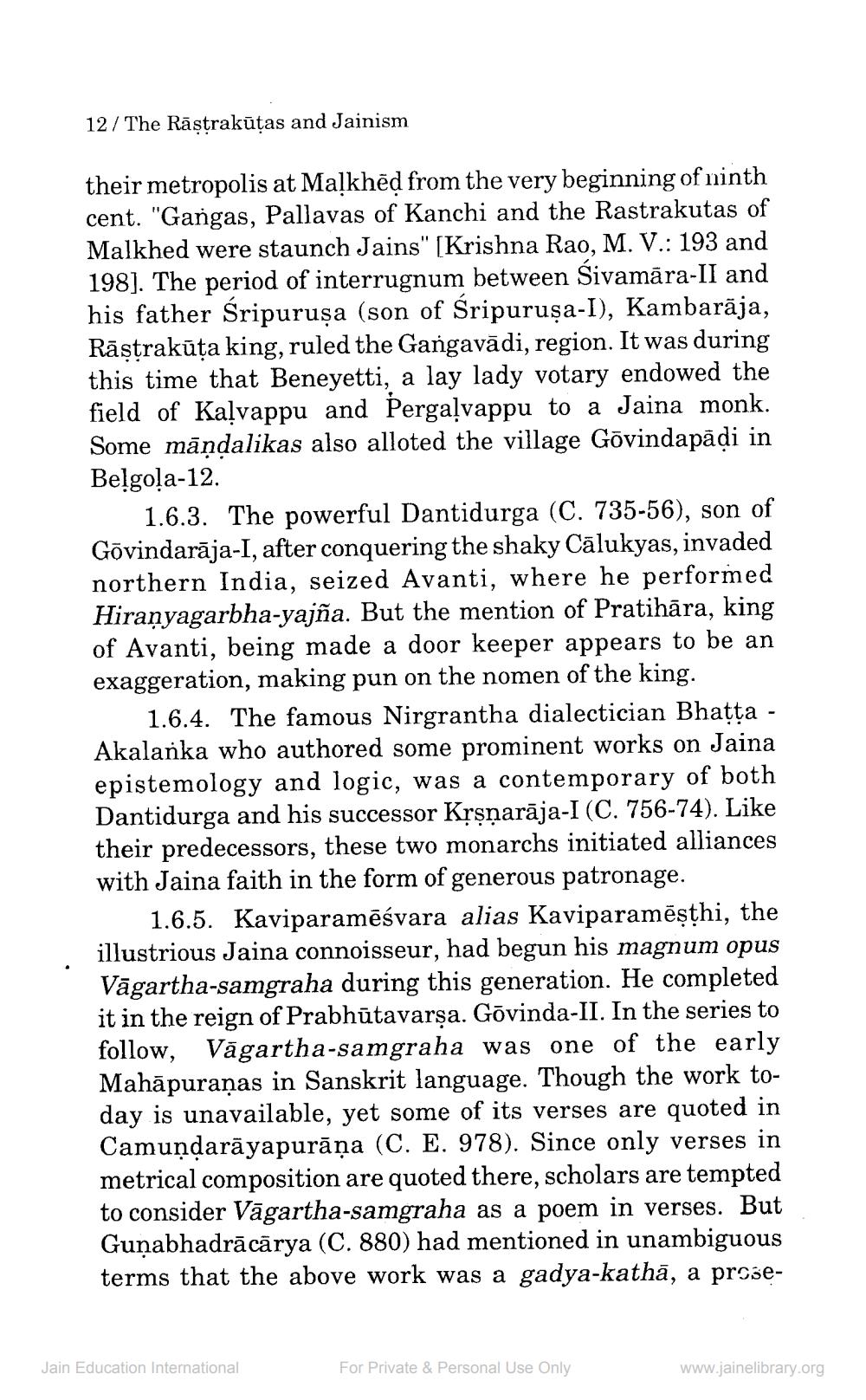________________
12/The Rāṣṭrakūtas and Jainism
their metropolis at Malkhed from the very beginning of ninth cent. "Gangas, Pallavas of Kanchi and the Rastrakutas of Malkhed were staunch Jains" [Krishna Rao, M. V.: 193 and 198]. The period of interrugnum between Sivamāra-II and his father Sripuruşa (son of Sripurușa-I), Kambarāja, Rāṣṭrakūta king, ruled the Gangavādi, region. It was during this time that Beneyetti, a lay lady votary endowed the field of Kalvappu and Pergalvappu to a Jaina monk. Some mandalikas also alloted the village Govindapāḍi in Belgola-12.
1.6.3. The powerful Dantidurga (C. 735-56), son of Govindaraja-I, after conquering the shaky Calukyas, invaded northern India, seized Avanti, where he performed Hiranyagarbha-yajña. But the mention of Pratihāra, king of Avanti, being made a door keeper appears to be an exaggeration, making pun on the nomen of the king.
1.6.4. The famous Nirgrantha dialectician Bhaṭṭa - Akalanka who authored some prominent works on Jaina epistemology and logic, was a contemporary of both Dantidurga and his successor Kṛṣṇarāja-I (C. 756-74). Like their predecessors, these two monarchs initiated alliances with Jaina faith in the form of generous patronage.
1.6.5. Kaviparamēśvara alias Kaviparameṣṭhi, the illustrious Jaina connoisseur, had begun his magnum opus Vāgartha-samgraha during this generation. He completed it in the reign of Prabhutavarṣa. Govinda-II. In the series to follow, Vagartha-samgraha was one of the early Mahāpuraṇas in Sanskrit language. Though the work today is unavailable, yet some of its verses are quoted in Camuṇḍarayapurāṇa (C. E. 978). Since only verses in metrical composition are quoted there, scholars are tempted to consider Vägartha-samgraha as a poem in verses. But Gunabhadrācārya (C. 880) had mentioned in unambiguous terms that the above work was a gadya-kathā, a prose
Jain Education International
For Private & Personal Use Only
www.jainelibrary.org




